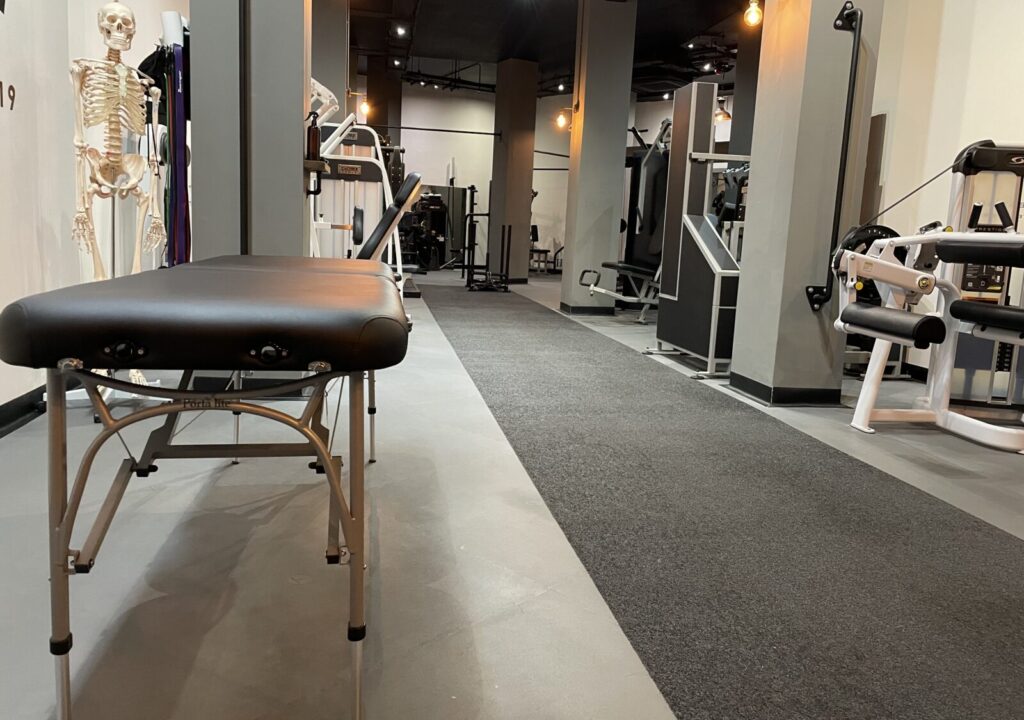In this post I explain why there’s a massage table on the gym floor at our facility and why I couldn’t do without it.

A new client asked me this question when walking into the gym for the first time the other day.
I’ve been working in this way for so long I’d forgotten this was a little unusual.
Most massage tables are crammed into treatment rooms away from the gym floor, creating a clear delineation between treatment and training.
Here those two things exist on a continuum.
A table that’s never used for massage
Despite its name, the table is never used for massage but instead for in-depth assessments of your muscular system.
Training is not just about logging weights and workouts, it’s about assessing what those sessions are actually doing to your body.
That means checking range of motion and stability in different joint positions. This is much easier to do on a table than it is on the floor.
Fundamentally, the table speaks to the level of detail that we employ and the care we take.
This becomes especially relevant for clients who are recovering from pain and injury.
So yes, a table in a gym is a little unusual. But it’s no more unusual than a garage at a Formula One race if you think about it.
I couldn’t work without one. The same should be true of more gyms.